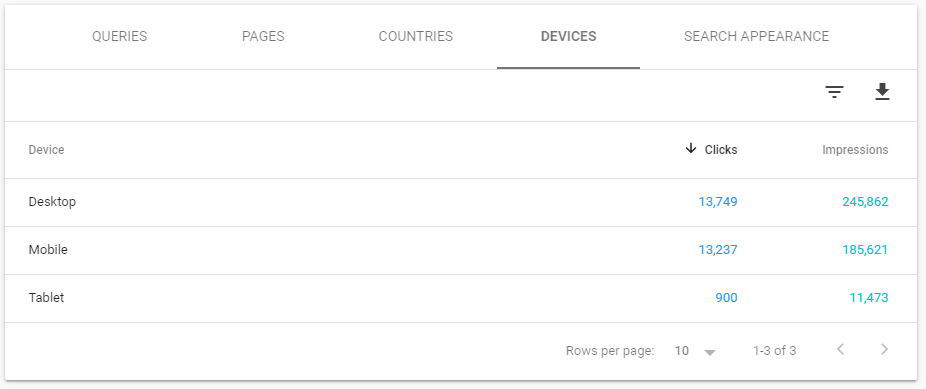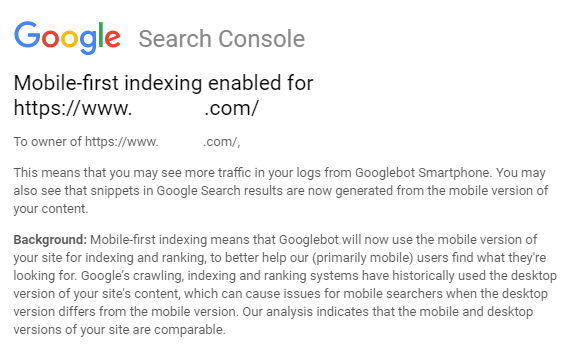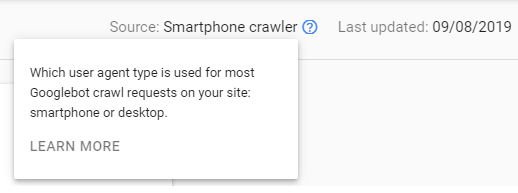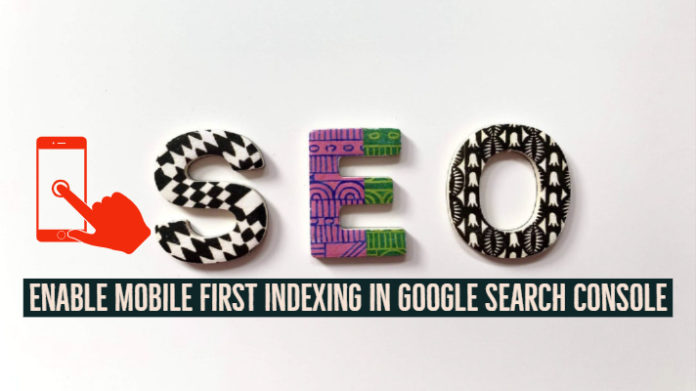Mobile compatibility has been one of the enormous changes that have been introduced in recent times for web development. If you are a person well versed with the game of SEO, you would understand the importance of websites that offer 100% smartphone compatibility.
Improving your mobile site directly helps in improving your traffic and other search engine metrics. Google has been focussing on the mobile-friendliness of your website as a prime metric for the indexing, ranking as a critical metric to drive search traffic.
Google has been sending notifications well in advance to webmasters to ensure that your site is ready for Mobile first indexing.
What is Mobile first indexing?

If you are into SEO or digital marketing for a long time, you will understand the intricacies that the genre stands for. You would be well aware of the fact that mobile-friendliness has been one of the primary metrics that Google checks out for determining the ranking for your site.
Google recently enforced a couple of new changes in the way it indexes web content. These changes are bound to drastically affect your search engine rankings – whether for good or bad. That would be something beyond the scope of this post.
So what is Mobile first indexing? The explanation should be clear enough from the name itself. Mobile first indexing would simply mean that Google will use mobile versions of the websites for indexing and ranking your websites.
This is in sharp contrast to the earlier times where the desktop version took precedence over the mobile version of a website. Most of the tools even today are configured to analyze your site based on the desktop version.
In any case, we would expect it to change quite soon, what with the focus of Google on the mobile-friendliness of a website.
Why Mobile first Indexing?
It is self-explanatory, right? It should not be a question that would need any sort of extra analysis. Mobile phones have become one of the most ubiquitous devices, and we have been using them for practically all purposes.
The growing use of mobile phones and their usage for day to day browsing and other tasks over the internet have made them extremely important. For a lot of people, the mobile device is the primary computer. It explains why mobile-first initiative from Google is focussed on the mobile-friendliness of your website.
The technical definition of a Mobile First indexing would mean “crawling, indexing, and ranking of webpages. Typically, Google bots have typically used the desktop version of a page. It may cause viewability issues for mobile users when the desktop version is vastly different from the mobile version.
Mobile-first indexing means that we’ll use the mobile version of the page for indexing and ranking, to better help our — primarily mobile — users find what they’re looking for.”.
Google will crawl your site from smartphone browsers context instead of as a desktop browser. That should be the essence of how the new crawling and indexing techniques will work.
Do note that the Mobile-first index is not a separate one from what we have been witnessing as of now. It will be a single indexing option and will focus on the unique index. There will not be separate index options for mobile and desktop. The Mobile-First Index will mean that Google will index the mobile version of the particular website and not the desktop version.
How will it impact your rankings?

Well, mobile optimization of websites has begun for over a few months now. Most of the sites have turned mobile friendly. In any case, check if your site is entirely user-friendly when visited through a mobile browser.
Googlebot will crawl your website as a smartphone browser. It will index whatever it finds. The ranking of your website will be dependent upon what the smartphone user-agent on the Googlebot finds on your site. That should include the speed of the website as well.
If your site looks and displays the same both on desktop and mobile, it will not make any specific difference to you. You will not be affected if you have opted for making your website mobile-friendly.
If you do not have separate versions for the mobile and desktop, the change should not affect you much. The mobile and desktop versions will remain the same. However, you would need to ensure that the desktop version is well optimized for the mobile screen. There are times where you have opted for a design that adjusts to the screen that the content is rendered. Even in those cases, you will not find any considerable difference.
Make sure your site is mobile friendly if you are using separate URLs for mobile and desktop. The indexing from the mobile site will take precedence over the desktop version, and if your mobile version has nay issues for speed or any other similar problems, you will end up finding your ranking severely affected.
How to check if your site is enabled for Mobile first indexing?

Google has issued the guidelines for enabling the mobile first indexing on the websites.
With effect from July 1, 2019 – all the new sites (that would mean all the sites created after July 1, 2019, or the ones that were first indexed on Google after the date) will be enabled for the Mobile First indexing.
For the existing sites, Google will continue to evaluate until moving to the full mobile-first world.
That should not mean the existing sites can continue with the older design. Opting for a mobile-friendly website should be the norm going forward. More on that later in this post.
How to check mobile first indexing status on your site? Well, Google lets you know! If you are using Google Search Console (like every website owner should be doing), you would have already received the notification has been enabled on your website. You need to login to your Google Search Console and check for the notifications served in recent past.
If you have multiple websites under a single Google Search Console account, you would ideally get a batch notification to indicate that the mobile first indexing has been enabled on your site.
To check if the website has been enabled for the mobile first indexing, follow the steps featured here –
- Visit your Google Search Console
- Locate the message board on your Google Search Console.
- You should find a message that starts with something like “Mobile-First indexing enabled.”

That should confirm you whether your website has been enabled for the mobile first indexing as yet.
Another way you can check it would be to find which crawler is indexing your website. This again can be done with the help of Google Search Console. Follow the steps here below –
- Log in to your Google Search Console.
- Look for the settings
- You should find the crawler used for indexing your website.
- Look for the Crawl as an option and find what does it say. If you find Googlebot smartphone, your site is enabled for mobile first indexing. On the other hand, the Googlebot desktop will mean your site is not yet enabled for the mobile first indexing.
How to Enable Mobile First Indexing on your site?
Well, Google Search Console is the answer. It will let you know the status of whether the Mobile first indexing has been enabled on your website. However, if the site is not allowed; there is nothing you would be able to do.
Yes, indeed. You will no be able to enable the mobile first indexing on your website in any way. Google has to do it at their end. The changeover is happening gradually, and your site too will be enabled quite soon. Keep waiting and checking for the status to ensure that the service has been enabled for you.
You may, perhaps, get in touch with Google to let them know that your site has not yet been enabled. In any case, Google follows its own schedule, and you should find the site allowed for mobile first indexing in due course of time.
What if your site is not mobile friendly?
Having said that, we will recommend opting for AMP or other options to ensure that your site is mobile friendly and the new mobile first indexing does not affect you much.
In any case, mobile-friendliness of the website in the future, and you should make sure that the site is mobile friendly before it is too late. Whether your site is mobile-friendly or not, it will ultimately be moved to the mobile-first indexing system. It should be worthwhile that you turn it into a mobile-friendly website.
There are a few pointers that may be worth checking. Make sure you have only one URL. A separate mobile URL may be a thing of the past. Not only separate URLs for mobile and desktop but make sure you remove all the services that tend to provide different content based on the various devices. Instead of opting for the separate accessibility services, it would be a good idea to build the accessibility services directly into the site that has been otherwise optimized for a mobile device.
Google recommends using a single URL for both mobile and desktop clients. However, Google will continue to support the separate URLs and responsive design; it still advises against the use of different URLs to avoid confusion for the users and search engines.
Make sure you meet at least the following conditions –
- More straightforward navigation across both mobile and desktop versions
- Faster loading times.
- Technical SEO
Do note that Google will not check whether your website is mobile-friendly when migrating you to the Mobile first indexing regime. That would mean, you need to ensure that the website is mobile-friendly. This will help you avoid any ranking issues in the future.
If you want to check if your site is mobile-friendly or not, it may be a good idea to get it checked through the Mobile-friendliness tester. The tool will let you know any issues that may be affecting the mobile-friendliness of your site and suggest improvements.
The Concluding Thoughts
That was all we have for the new Mobile first indexing option put forward by Google. While there is no way to enable the Mobile first indexing on your website or disable it, knowing the positives and negatives of the changeover will help you have your website ranked appropriately.
Ensure that you have taken all the precautions and improved the mobile-friendliness of your site. Once that done, you would not need to worry about the mobile-first indexing, which is set to be the future for all the websites.

